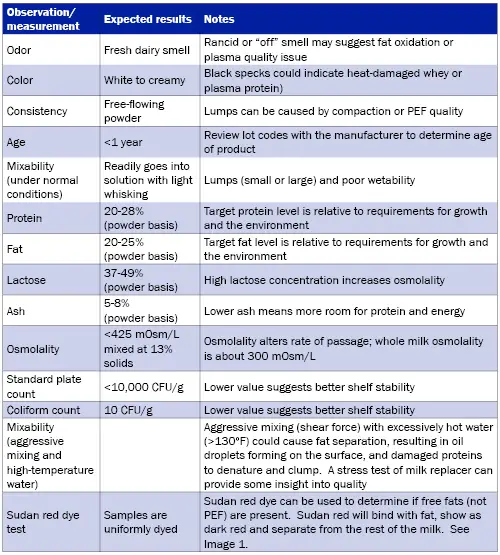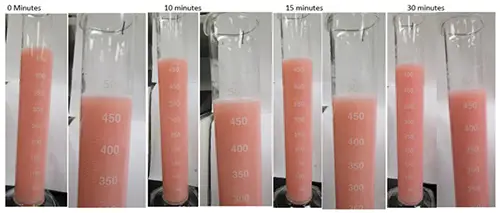
Know what’s in your milk replacer
 By Dr. Noah Litherland, Ph.D., Vita Plus dairy technical specialist
By Dr. Noah Litherland, Ph.D., Vita Plus dairy technical specialistA quality milk replacer starts with quality ingredients. To better understand milk replacer quality, let’s first review the components of milk.
What’s in milk?
On a solids basis, milk is about 25% protein, 30% fat, and about 45% other solids, including lactose and ash.
- Milk protein is mostly made of whey and casein.
- Milk fat is a mixture of short-, medium-, and long-chain fatty acids (as triglycerides) packaged in small fat droplets called milk fat globules. The milk fat globule is surrounded by a membrane containing a diverse group of chemical compounds.
In the first couple of weeks of lactation, milk protein and fat are elevated while lactose concentration is low. By week three of lactation, milk components have mostly stabilized (milk protein and fat have decreased and milk lactose has increased) and remain mostly stable throughout the rest of lactation. As milk volume decreases in later lactation, milk protein and fat concentration increase.
What’s in milk replacer?
Milk replacer is manufactured from high-quality ingredients produced from human food production.
The protein content of milk replacer typically ranges from 19% to 28%. Ingredients contributing to milk replacer protein include whey protein or whey protein concentrate, skimmed milk powder, and dried milk.
- Whey protein is a high-quality ingredient produced from the liquid whey that is a byproduct of cheese manufacturing. The liquid whey is fractionated and the concentration of whey protein increases as water, lactose, and minerals are removed.
- Skimmed milk or butter milk is a high-quality ingredient from butter production.
- Supplemental amino acids – such as lysine and methionine – are commonly added to milk replacer to meet the amino acid requirements for rapid growth. Lysine is the first limiting amino acid for growth. Methionine plays a role in growth and gene expression and serves as an antioxidant.
- Bovine plasma is another ingredient added to milk replacer as it provides an excellent amino acid profile for growth as well as IgG for increased intestinal function.
Common fats used in milk replacer include tallow, lard, palm oil and coconut oil.
- Tallow fatty acid composition is similar to milk fat.
- Lard is typically less saturated than tallow.
- Palm oil is harvested from oil palm trees in Southeast Asia. Palm oil is valuable and used in many food applications for its creaminess, white color, lack of odor, and high stability.
- Coconut oil contains medium-chain fatty acids, which are very digestible and have natural antibacterial properties.
An emulsifier, such as lecithin, is typically added to the fat to increase mixability and digestibility of fats in milk replacer. Preservatives are used to keep fats stable in milk replacer and prolong shelf life. Fat is typically encapsulated in protein to form a protein-encapsulated fat (PEF).
High-quality milk replacer fat includes the correct chemistry (fat profile) and the correct chemical form. Small fat droplet size (less than 5 microns in diameter) and a low concentration of free fat (not encapsulated) are key factors impacting fat digestion.
Understanding the above ingredients can help us gauge milk replacer quality. Of course, calf performance is the best metric for milk replacer quality, but applying the concepts in Table 1 is helpful in differentiating variance in milk replacer options.
Watch this video on our YouTube channel to learn more about milk replacer ingredients.
Table 1. Methods of determining milk replacer quality.

Image 1. Reconstituted milk replacer with Sudan red dye added to determine if the samples have milk fat quality issues. Sudan red will bind with free oil and cause a red-colored layer to form. These samples are uniformly dyed and normal.

| Category: |
Calf and heifer nutrition Starting Strong - Calf Care |

